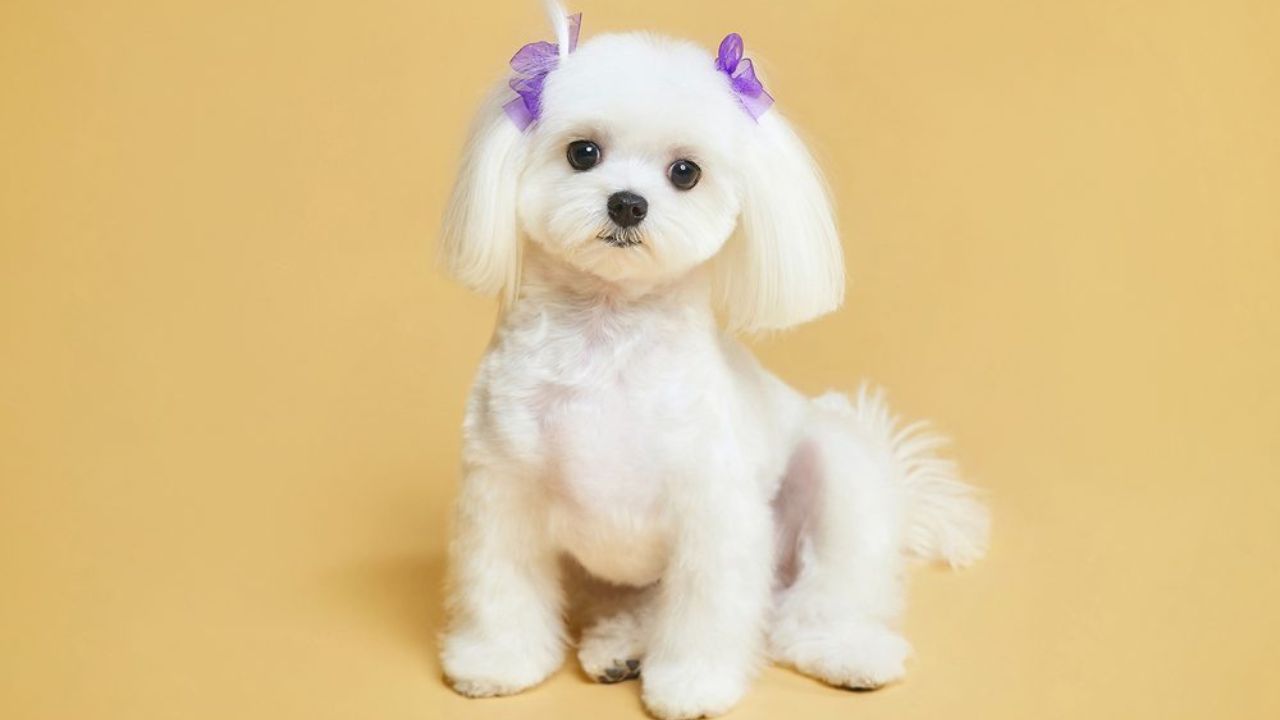If you’re considering owning a small dog, you may have encountered the term “teacup” when researching breeds. The term generally refers to dogs smaller than their breed’s standard size, including the Maltese. However, some breeders also advertise “tiny teacup” Maltese, causing confusion and concern among potential owners. This article will explore these terms and what you need to know about Maltese tiny teacups.
What is a Maltese Tiny Teacup?
The term “teacup” is controversial among dog breeders and veterinarians, as it suggests that breeding practices prioritize size over the dog’s health, resulting in health problems such as fragile bones, respiratory issues, and hypoglycemia. “Tiny teacup” is even more concerning, as it implies breeding for an even smaller size than a teacup.
The Maltese breed standard from the American Kennel Club (AKC) describes them as “a toy dog covered from head to foot with a mantle of long, silky, white hair”. The standard weight for Maltese dogs is between 4 and 6 pounds, with a height of 8 to 10 inches.
Tiny teacup Maltese are usually marketed as weighing less than 2 or 3 pounds and are often significantly smaller than their standard counterparts. These dogs may look adorable, but they are not without risks.
Risks of Maltese Tiny Teacups
Breeding tiny teacup dogs has resulted in a host of health issues for the tiny dogs. The undersized dogs are prone to developing fragile bones that are easy to break or fracture. They can suffer from respiratory distress syndrome, and their internal organs may not develop properly, leading to heart and lung issues. They have also been known to develop severe hypoglycemia, which is potentially fatal.
Ethical breeders should avoid breeding for tiny sizes and prioritize the dog’s health. The breeding practices should be based on the breed standards besides prioritizing a small size.
Caring for a Maltese Tiny Teacup
You should know their unique needs if you decide to get a Maltese tiny teacup. They require care, attention, and a special diet to maintain their health. Due to their size and delicate bones, you must be extra careful when handling them. They are not suitable for households with young children or larger dogs.
Tiny teacup Maltese must see their veterinarians regularly to prevent and manage health issues. They require a safe and comfortable place to rest, as they are prone to hypoglycemia, seizures, and other health complications. Feeding them a healthy diet and avoiding overexerting them is paramount when caring for these teacup Maltese
Origins of the Maltese Tiny Teacup Breed
The Maltese Tiny Teacup breed originates from the traditional Maltese dog breed, which is believed to have been around since ancient times, originating from the Mediterranean island of Malta. These tiny pups were selectively bred to create a smaller version of the Maltese breed, resulting in the Maltese Tiny Teacup breed we know today. This breed is so small and desirable that some breeders use unethical practices to breed even tinier dogs, resulting in health issues for the puppies. Therefore, choosing a reputable breeder who cares for their dogs’ welfare is essential.
Appearance
The Maltese Tiny Teacup breed has long, silky, white hair that reaches the ground. They have dark, oval-shaped eyes and a black nose. Their ears are set high and triangular, making them look quite adorable. These dogs have compact bodies with short muzzles and small paws. They have long hair that needs frequent grooming and may need to be trimmed around their eyes, mouth, and bottom.
Temperament
Just like their larger counterparts, the Maltese Tiny Teacup breed is known to be playful, affectionate, and intelligent. They are sociable and like to be around people so they could be a better choice for owners away from home for extended periods. They become attached to their owners and anxious if left alone for too long. Maltese Tiny Teacups are also perfect family dogs and get along well with children and other pets.
Health Issues
Unfortunately, the Maltese Tiny Teacup breed is prone to several health issues, including dental issues, hypoglycemia, reverse sneezing, tracheal collapse, and breathing problems. They are also vulnerable to anxiety and obsessive behavior, which might become more common if they’re under-socialized or not adequately exercised. This breed has a long lifespan of around 12-15 years, but their small size makes them more delicate and prone to injuries. Providing them with a healthy, balanced diet, regular exercise, and plenty of love is crucial to ensure they live happy, healthy lives.
Training and Exercise
Although tiny, the Maltese Tiny Teacup breed is full of energy and will require daily exercise to stay healthy and fit. Short walks, games, and playtime in the backyard are enough to meet their daily exercise needs. These dogs are also brilliant and respond well to positive reinforcement training. Socializing these tiny dogs from an early age and training them in basic commands like sit, stay, and come are essential for a well-behaved Maltese Tiny Teacup.
Conclusion
In conclusion, owning a Maltese tiny teacup can be incredibly rewarding but has significant responsibilities. These dogs require special care, and their tiny size makes them vulnerable to various health conditions. When choosing to own a dog, it is essential to research the breed and choose ethical breeders and sellers who prioritize the dog’s health over perfecting their tiny size. Careful attention, love, and veterinary care can help your tiny teacup Maltese live a long, happy life.

